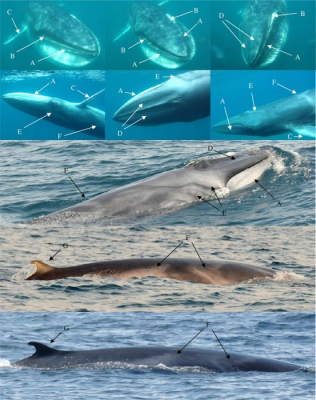New paper presents major advances in understanding of Omura’s whale
A cetacean research programme in Madagascar has delivered an unexpected breakthrough in knowledge of the Omura’s whale. Habitat, feeding, social behaviours and song are all documented in the first known and confirmed study of the species.
Previously mistaken for Bryde’s whales, Omura’s was identified as a new and separate species in 2003 when genetic testing was performed on an animal stranded in the Sea of Japan and eight earlier specimens. The lack of confirmed live sightings meant that virtually nothing was known about their ecology or behaviour until now.
The research programme was led by Salvatore Cerchio, formerly of the Wildlife Conservation Society, now with the New England Aquarium and Wood's Hole Oceanographic Institute, and part-funded by the IWC Small Cetaceans Fund. The initial focus of the programme was the coastal dolphin species of north-west Madagascar, but the work began to broaden in 2012 when research efforts moved from coastal waters to the more diverse habitat of the Ankivonjy Marine Protected Area. Here scientists began to make extensive observations of a small rorqual which the team had previously seen occasionally and identified as Bryde’s. Photo-identification suggested that the animals were in fact Omura’s whales, and this was confirmed by genetic analysis of biopsy samples.
Boat surveys were conducted for periods of one month each year between 2011 and 2014 and there were 44 Omura’s whale sightings. In addition to photographic-ID and skin biopsy sampling, the team used underwater video and acoustic recordings to gather as much information as possible.
Their findings are published in the Royal Society Journal Open Science and provide the first documented observations of Omura’s habitat, distribution, feeding and reproductive ecology, and vocal behaviour. This work also dramatically revises our understanding of the global range of the species, and provides detailed visual descriptions which will enable other scientists working in the field to identify Omura’s whales more easily.
Among many discoveries, the paper presents evidence that Omura’s favour a shallow, open shelf habitat, avoiding both deep water and very shallow coastal regions. Whilst further research is undoubtedly required, the team also observed Omura’s lunge-feeding, probably on zooplankton, and communicating with a rhythmic and repetitive song for several hours at a time. They were regularly observed in loose groupings, with up to six animals sighted within a few hundred metres, although only mother-calf pairs were regularly seen swimming closely together. One significant question raised by this research is why mother-calf pairs were seen in some years but not others.
The paper recommends that this newly discovered subpopulation should be assessed for inclusion on the IUCN Red List of Threatened Species, and further research is recommended to establish its conservation status.
Entitled Omura’s whales (Balaenoptera omurai) off northwest Madagascar: ecology, behaviour and conservation needs, the paper is published by Royal Society Open Science (DOI:10.1098/rsos.15301). Click here to read it.
Whilst the identification of this Omura’s sub-population led Cerchio and the team in an unexpected direction, they also managed to meet the original programme aims related to the ecology, status, fisheries interactions and conservation of Indo-Pacific humpback and bottlenose dolphins. Click here to read about that work.
Part of the funding for this programme was provided by the IWC Small Cetaceans Voluntary Fund. This fund was established to support high priority research that improves conservation outcomes for populations of small cetaceans, particularly those that are threatened or especially vulnerable to human activities. Click here to read more about the Small Cetaceans Voluntary Fund.

